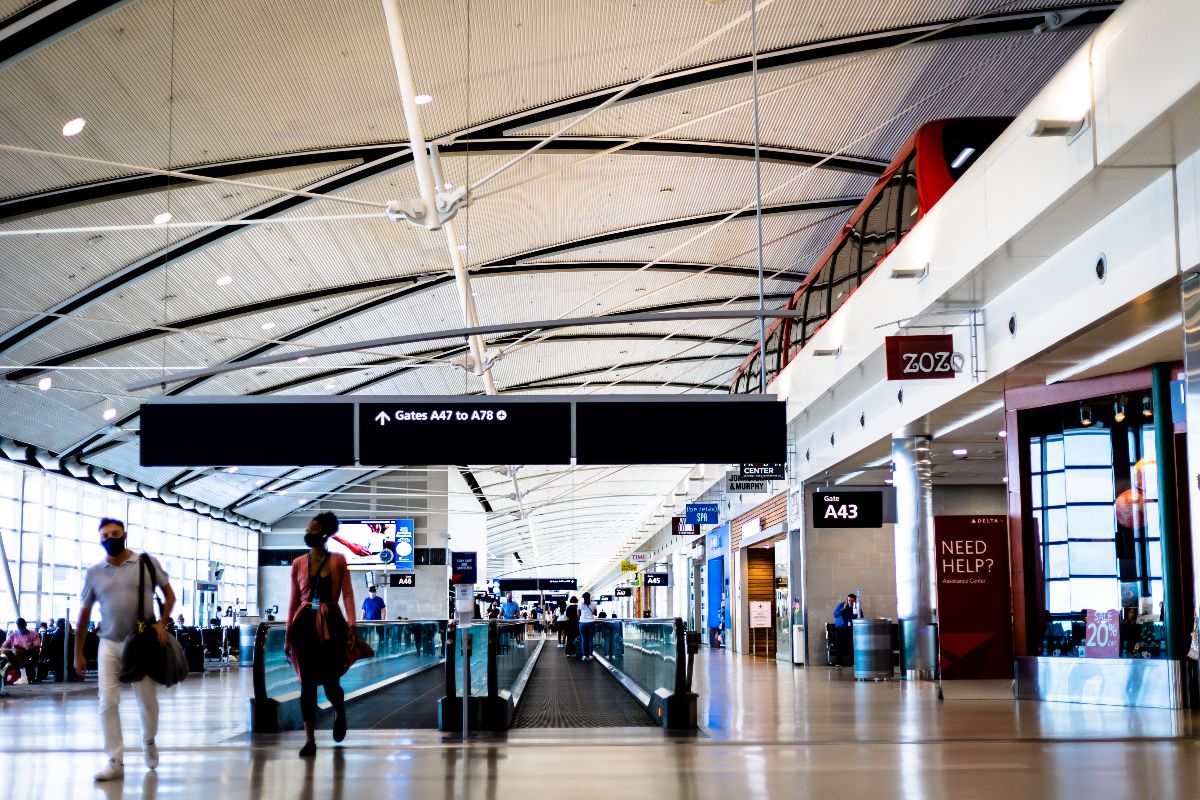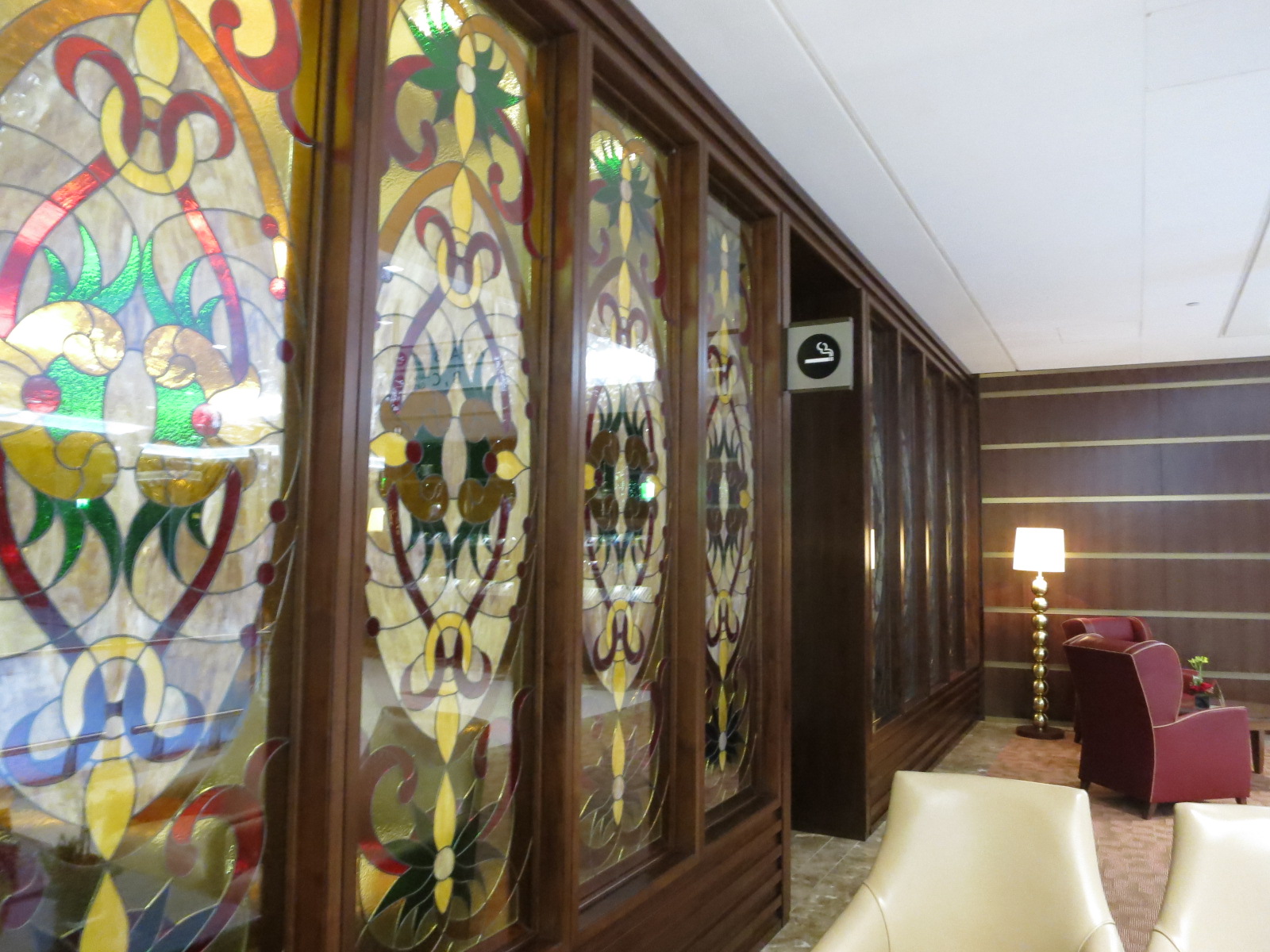Detroit airport is planning to add a cigar lounge, and anti-smoking groups are freaking out, claiming it “would expose millions of travelers and airport employees to harmful secondhand smoke.”
There’s been a campaign against the effort over the past year, since it was first introduced, by groups including the American Heart Association, American Cancer Society Cancer Action Network, American Lung Association, Campaign for Tobacco Free Kids, Detroit Wayne Oakland Tobacco-Free Coalition, Parents Against Vaping e-Cigarettes (PAVe), and Tobacco Free Michigan.
Now commissioners from Wayne County, Michigan – where Detroit airport is location – along with several members of the Michigan House of Representatives have lined up in opposition and are demanding the airport halt the plan.
Last week, the Wayne County Commission passed a resolution formally opposing the cigar lounge proposal, citing concerns about the potential rollback of Michigan’s long-standing smoke-free air protections and the health risks associated with secondhand smoke.
…However, the [airport authority] has defended its process, stating that the idea emerged from “interest from the community and local businesses,” particularly given DTW’s role as an international travel hub.
A key talking point against the smoking lounge is that “No community group, employee organization, or public health expert has asked for a cigar lounge.” Indeed, one poll finds that “77 percent of Michigan voters oppose adding a cigar lounge at DTW.”
I’m not sure that matters, or that it’s the correct standard. There are passengers who want it, even if most passengers don’t (most passengers don’t want valet parking or USO lounges, either).
Naturally, the CDC prefers no smoking at all,
[S]moke-free policies that completely eliminate smoking inside airports are the only way to fully protect nonsmoking employees and travelers from [secondhand smoke] exposure.

I am not a smoker. Maybe 25 years ago I’d occasionally have a cigarette at parties. I can count the number of cigars I’ve had on one hand, and those were largely Cubans I may or may not have brought back to the United States for the novelty.
But I’d note that there are other U.S. airports with smoking areas, like Miami, Las Vegas, and Nashville. Travel to Europe and they’re much more common. Frankfurt has several smoking lounges throughout the airport equipped with special ventilation systems. Munich, Vienna, Zurich, and Rome offer smoking as well. You’ll find smoking areas throughout Tokyo Haneda, Singapore Changi, Seoul and Hong Kong, too, to name just a few.
And these include are some of the world’s best airports! Modern smoking lounges have proper containment and ventilation, so you wouldn’t know from outside the space that smoking was going on inside.
You’ll even find a cigar lounge in Lufthansa’s First class terminal, just inside the entrance down the hall on the right.

Emirates doesn’t just have smoking lounges throughout the Dubai airport, but there’s even a cigar bar in the A concourse first class lounge. If not for the signage, you’d never know.

Here’s the modern approach to airport smoking spaces:
- Negative Air Pressure: Smoking lounges are designed to maintain a lower air pressure compared to surrounding areas. This ensures that air flows into the lounge rather than out, keeping smoke contained.
- HEPA air filtration: Air extracted from smoking lounges is passed through HEPA filters to remove particulate matter, including smoke particles.
- Carbon Filtration: Activated carbon filters absorb odors and harmful chemicals, such as benzene and formaldehyde, to minimize their release.
- Direct Exhaust: Use of direct exhaust vents releases filtered air outside the airport building, bypassing shared air circulation systems.
- Frequent Air Exchanges: Air in smoking lounges is typically replaced every few minutes to dilute smoke concentration and maintain air quality.
To the extent these systems are properly set up and maintained, they work extremely well. Negative air pressure isolates the contents. HEPA filtration traps nearly all particulates. And passengers outside the space have limited exposure to the air in any case.
If there’s a reasonable concern it’s that Detroit airport might not maintain the systems as well as Tokyo Haneda. Put another way, there are American Society of Heating, Refrigerating and Air-Conditioning Engineers standards for indoor air quality that they should be adhering to. If you don’t believe they will, you would have concerns, but those concerns should be far broader than a cigar lounge.
In airports with modern systems like Frankfurt or Singapore – or ostensibly a new build in Detroit – the risk of secondhand smoke exposure is minimal. In older facilities, perhaps the Cairo airport terminal 3 smoking lounge down by the F gates, you might get leakage of odor and pollutants.
Thirteen years ago, a study promoted by cigar lounge opponents found that airport smoking areas contributed to higher levels of detectable particulate matter, however it concluded that “the difference between the average level in the nonsmoking areas of airports with designated smoking areas and the average level in smoke-free airports was not statistically significant.”
And in any case, cigars aren’t cigarettes; brand new systems are far more prophylactically effective than already-old systems measured more than a dozen years ago; and there’s not really a suggestion that higher measurable particulate matter poses any specific public health risk.
CDC argues that “There is no risk-free level of secondhand smoke.” That’s a sleight of hand game. There’s no risk-free flying, either, even though it’s far safer than driving! There’s no risk-free ownership of buckets. There are about 15 deaths annually attributed to buckets. “Risk-free” isn’t nearly as useful a concept as relative risk. Most of the food in airports and on board is unhealthy, and thus not risk free. The escalators at Detroit airport are riskier than this!
Travelers like a beer in the airport, marking the moment as you set off on an adventure or begin a journey. And some like a cigar, too. I think that’s ok?


I’m not a smoker, but, yeesh, talk about hyperbole. If folks wanna do that to their lungs, there are ways to do so without creating second-hand smoke for the rest of us. We don’t need to be puritanical about this.
The smoking lounge in Terminal D at McCarran* is centrally located and I’ve frequently used it as a meeting place when travelling with others. If it wasn’t for the clear glass (through which you can see the people inside), you’d never know tobacco was being smoked. No smoke, no odors. As Gary pointed out, the ventilation technology to contain the smoke is now common. Let the marketplace decide. If Detroit rolls out this cigar lounge and it doesn’t get used, they’ll either get rid of it or repurpose the space. (* for the love of god, just change it to “Las Vegas International” and call it a day.)
@Lucky Larry — Nope. It’s Harry Reid International! *cough*
Charge a fee —- this is a multi billon dollar industry
Put them in a separate building.
I am a former smoker, we are the worse when it comes to smoke. My brother’s garage smells so bad I cannot go inside it .
OMG! They’re going to open a fully contained space where people can smoke and the ventilation system will keep it under control. Oh, the humanity!
You know, alcohol and food are far greater threats to our health than second hand smoke.
What’s with the pearl clutching? If smokers want to smoke in a separate area, so what?
There are great resorts that offer cigar bars ( well ventilated ) across the world. Usually expensive with wonderful drinks, and no they are not for everyone, don’t like it don’t go there. As an occasional cigarette smoker, I will only visit for the champagne. Not for smoking
Good lord, life sucks enough as it is, and commercial travel is basically an exercise in sadomasicism these days. If some of us want a little cigar on a long layover, just give us a break. Evidence shows the anti-smoking crowd will try to restrict your enjoying a little cigar even if your own home if they can. It’s never enough for these people.
I detect tobacco smoke (and cigars are the worst). But, if designed properly, I will smell no smoke. The second-hand smoke argument is silly hand waving. Who is going to be subjected to second-hand smoke in a well designed cigar lounge (other than smokers in the lounge)? My only problem is that it will cost DTW money to install and maintain. I don’t want the fees they get because of me to pay for this.
Doesnt ATL have smoking lounges on each concourse?
Im not a smoker, but my friends who do skoke, the habit calms them down.
If we allow bars in airports, then let people have a place to smoke (like the smokers club in BNA).
I remember the smoking room at ICN years ago. The room had glass walls. The air inside was white with smoke. I guess those who didn’t have cigarettes on them could just go in and breathe.
Don’t for get the TGI Fridays open air cigarette smoking allowed inside Terminal D at MIA that is still around and open for business.
We probably should be having a respectful debate about drinking at the airport and on planes, but it generally has little effect on other travelers.
Anti-smoking groups, whether or not you agree with them, have been successful in turning smoking into something negative and public acceptance of smoking (and willingness to put up with being exposed to the smell) continues to decrease. Unfortunately even the best air systems aren’t able to prevent the clothes of someone in those lounges from picking up odors that will linger. And if you’ve actually been past a smoking lounge in Haneda, for example, you certainly notice it from the smell alone!
Smoking lounges in 1st world nations may stick around for another 10 years, but are unlikely to survive much longer.
Anyone affected my cancellations today? Had no issues on my flight last night. Phew! Gonna start to get spicy.
This seems to be the current trend in the US currently:
Cigarettes and Cigars- Not okay
Smoking Pot- Is okay
It’s in an enclosed space. Don’t want the smoke? Don’t go into the lounge. And what @Tee Jay says is correct. Pot smoking has simply replaced cigarettes and cigars.
What a bunch of Karens society has become.
So NYC can stink from Marijuana and no one says a boo because that’s racism, but to put a room where it doesn’t bother anyone is terrible?
For the record, I can’t stand smoke and I have never touched a cigarette in my life. But I cannot understand how converting cities into drug clouds where you can’t escape the stench and harmful health effects is considered acceptable and progressive. Beyond absurd and something that even a B script in Hollywood would never come up with.
@George Romey, @Tee Jay — Y’all forgot to complain about ‘the smell’
If the smoking population will pay for all of the costs of the most available means to not harm or affect other people, why not? Don’t we all really want a better traveling experience after all?
I am not and have never been a smoker. When asked to have a cigar with friends, I decline and state they will get much more enjoyment from it than I would, and do not request they abstain in my presence.
I routinely smoke cigars walking down sidewalks in Manhattan and no one says boo to me. Haven’t even had to use the PBA card.
I am a cigar smoker… most of my smoking takes place outdoors (golf course, deck, etc). Occasionally, with the proper ventilation system, indoor smoking is ok too. I agree with all of the comments calling out all of the Karens out there sticking their noses into everyone else’s business. Bring it on Detroit… add the lounge. DTW is catering to a slew of international folks working for/with the automotive industry (and other industries). Anyone concerned about the math… shouldn’t be. They’ll be sure the math works.
As a non-smoker who has lost family members to lunch cancer and emphysema, I’m not in favor of this cigar bar concept. My main issue is the small; smokers in general reek, and I don’t want to be seated next to one on the plane. Seriously, have you ever been next to a cigar or heavy cigarette smoker on a plane for four or five hours? I have. It was horrible.
Now, it someone wants to smoke that’s their business. I’m pretty libertarian in my outlook – do what you want as long as it doesn’t impact me, children, or small animals. If I didn’t have to smell it, I wouldn’t care, but being trapped in a metal tube next to someone who smells like that is just about the worst.
No thank you.
1) The government is not your mother. (Neither is Karen.)
2) Modern ventilation systems work extremely well, and others have already noted.
3) Some people like smoking cigars — some on a regular basis; some only occasionally. I smoke *maybe* 3-4 a year, always outside on the patio of my house, save for the rare excursion into a cigar bar in a Las Vegas casino or private lounge in Dallas. I personally cannot conceive of carrying all that $#|+ around with me just so I can light up @ DTW, but I’m sure regular cigar smokers will, do, and if the layover is long enough, would enjoy a cigar lounge @ DTW. (OTOH, no one is going to connect thru DTW just to smoke a cigar at the airport.)
4) All of the people and organizations so vehemently opposed to the idea should take solace in the fact that — if you’re careful enough — nothing good or bad will ever happen to you…
” if you’re careful enough — nothing good or bad will ever happen to you…”
I may be misreading your comment, and I apologize if I am. However, the way that I’m reading it I’m just not sure that you can say that nothing bad will happen. Smokers have a substantially increased rate of cancers of multiple types, not to mention cardiac issues. Non-smokers exposed to smoke of all kinds can also suffer from similar ailments. These are certainly bad things. The cleaning crews will have to enter such a smoking room and they will be exposed just as flight attendants used to be before smoking was banned in flight. And, as I stated earlier upthread flyers will have to sit next to rather smelly smokers on planes. Sorry, but this isn’t good at all.
Just have a Democrat suggest the idea and it will be OK’d. Think I am kidding, VA just elected an AG that wants to kill Republican reps and their children. Democrats have the most flexible morals – pot is OK, Prostitution is OK, tyranny is OK – as long as they here it from one of their leaders.
Good Sunday morning all.
Will nonsmokers be permitted access to the lounge for the purpose of flatulating?
(Asking for a friend…)